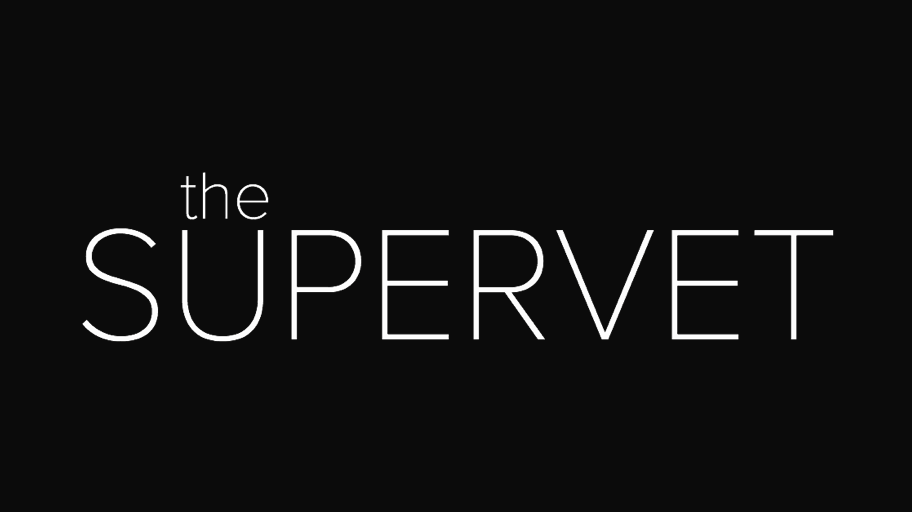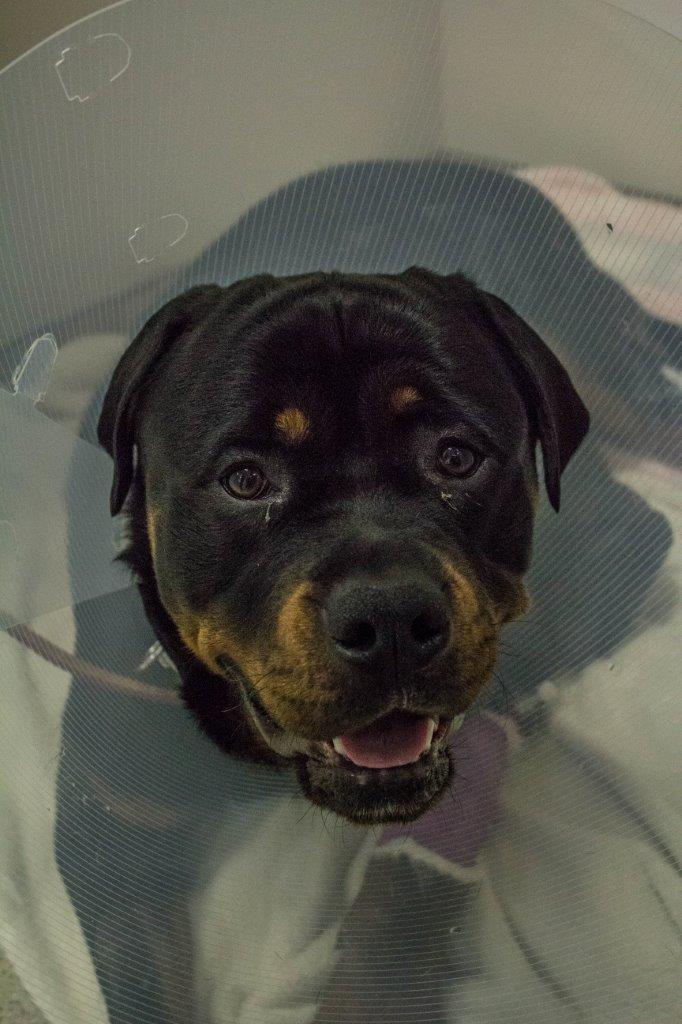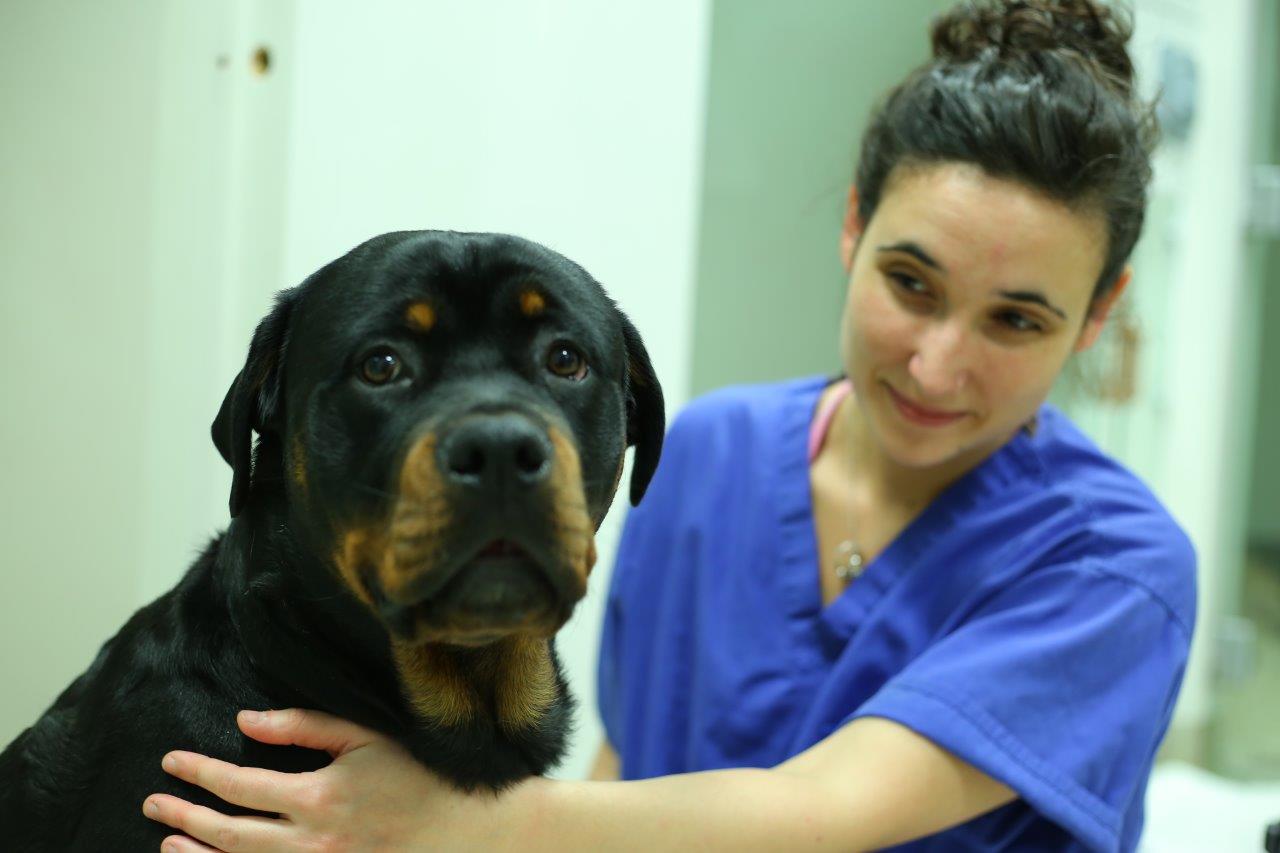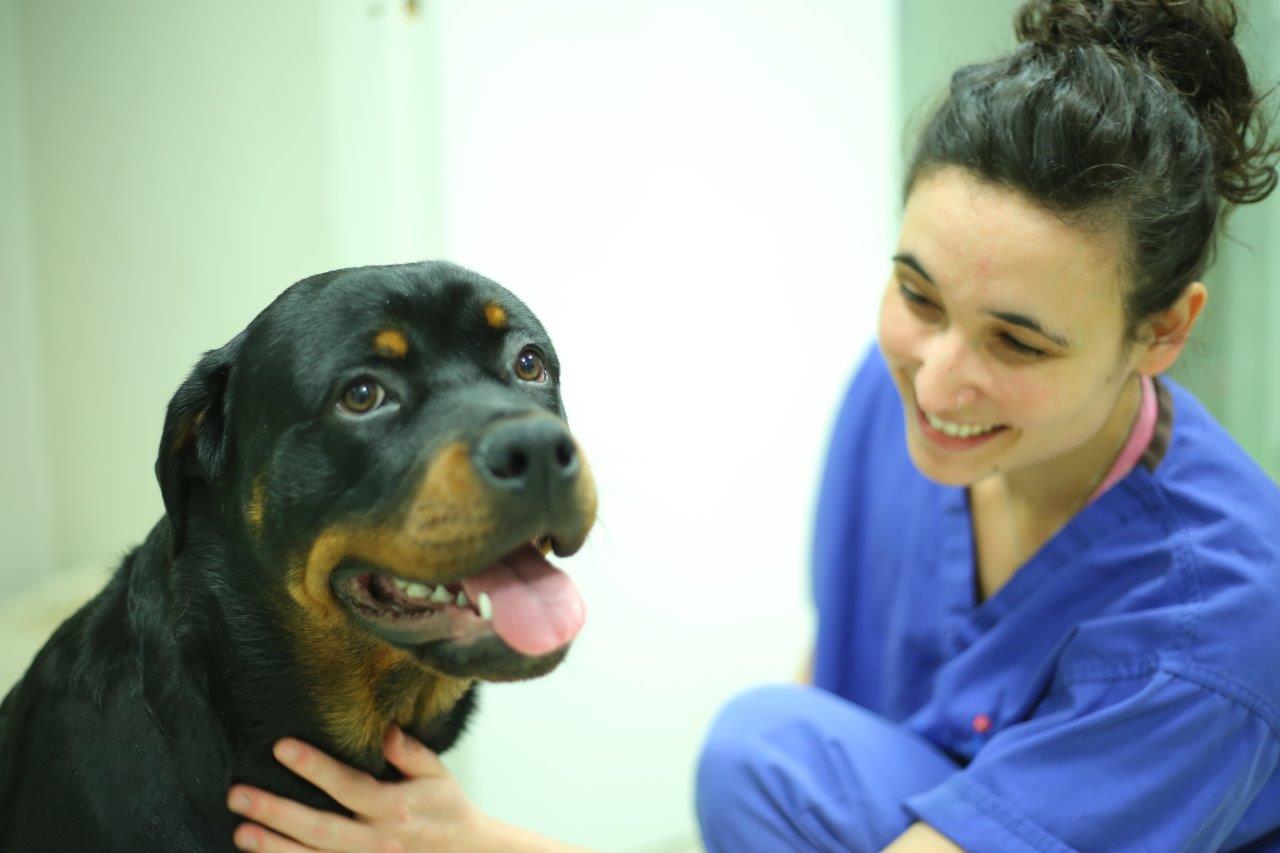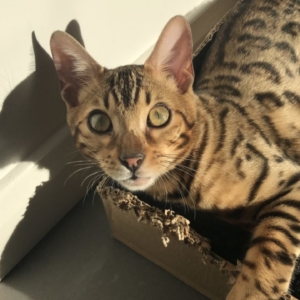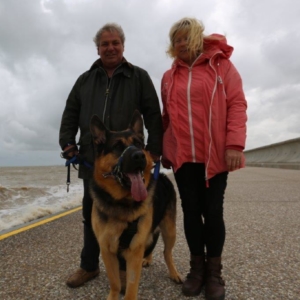Mauser
South African Monica and Bennet turn to Noel for help to treat their Rottweiler puppy Mauser. 6 month-old Mauser has a genetic condition, common in fast-growing large breeds, called OCD – Osteochondritis Dissecans – which has destroyed the cartilage on the ridge of his main ankle bone, the talus. Monica and Bennet want to avoid fusing Mauser’s ankle solid and to maintain the mobility in his ankle. They decide to go for a Talus ridge replacement, which involves replacing the surface of the talus with a metal implant. However, accessing the affected area, normally done by cutting the bone to open up the ankle joint, isn’t possible in Mauser’s case as his bones are still growing.
Noel comes up with a solution involving cutting through a ligament in Mauser’s ankle - and then using mesh seeded with stem cells to fuse it together again. But he warns there’s no guarantee it will be successful. Monica and Bennet decide to go ahead, but the journey to get Mauser better is complicated and unpredictable.
Their Story
Mauser lives with South Africans, Monica, and Bennett, on their farm in Kent.
The Problem
Mauser was referred to Professor Noel Fitzpatrick with unexplained pain in his right ankle. With scans and an examination, Noel identifies a large hole in his ankle caused by a genetic condition common in rapidly growing, large breeds called Osteochondritis Dissecans (OCD), which had destroyed the cartilage on the ridge of his main ankle bone, the talus. Whilst complete fusion of Mauser’s ankle was an option, Monica and Bennett wanted to try everything they could to avoid it, so Noel suggested a new treatment that he and his team developed. After discussing it in detail, the family wanted to try the new treatment, with the hope that it might work out for Mauser, knowing that there was no guarantee it would be successful.
Treatment
To repair the hole in the talus, a custom designed metal ridge was manufactured. Unfortunately, the usual way of accessing the area, cutting the side of the tibia, wasn’t an option because Mauser was still growing and Noel didn’t want to disrupt the growth plates. Unfortunately, Mauser would continue to be in pain and likely further damage his joint if the surgery wasn’t done soon. The solution was to cut one of the ligaments supporting the joint so that the joint could be opened and the hole accessed. A week prior to surgery Noel harvested bone marrow from Mauser’s shoulder so that stem cells could be cultured in a laboratory and seeded into a gauze that Noel can use in surgery to help repair the ligament that has to be cut. In theatre, Noel can clearly see the huge defect, which he removes and replaces with an implant. Next, Noel carefully stitches the ligament back together and surrounds it with the stem cell seeded gauze in an attempt to promote healing. If Mauser bears weight on the limb the ligament will immediately tear again, so Noel places Mauser in a splint to support his limb until healing occurs. The team and the family would have to wait 7 weeks to know whether the procedure had worked.
“He’s a special dog and we have to do something to keep his spirits up ”
Outcome
Unfortunately, whilst the implant in the talar ridge was successful, the ligament had not made satisfactory progress and Noel had to tell the family that the treatment had not worked. Monica and Bennett then had to make another decision, whether to go back to surgery to try and save the mobility in Mauser’s ankle or fuse it completely. The family opted to try and save the joint. Now that Mauser had reached skeletal maturity, Noel could adapt a procedure used in trauma cases – using nylon rope anchored to his bones by custom-made plates. Noel placed a metal frame to keep Mauser’s joint stable until the ligament, hopefully, repaired.
Thankfully, this second surgery was a success and now Mauser is back home with his delighted family, who were pleased to have gone on the long and difficult journey given how well he was doing now with a fully mobile ankle.
